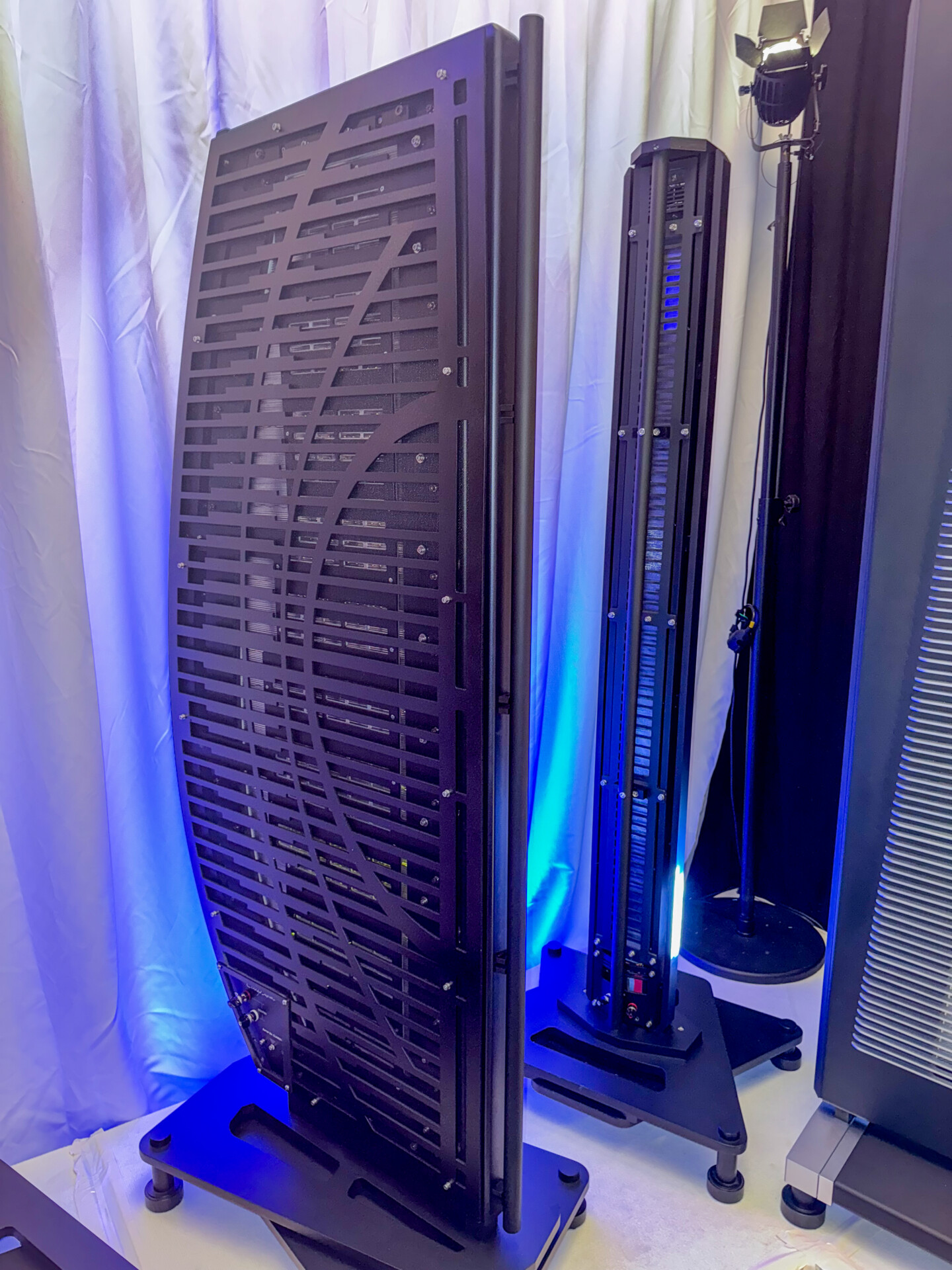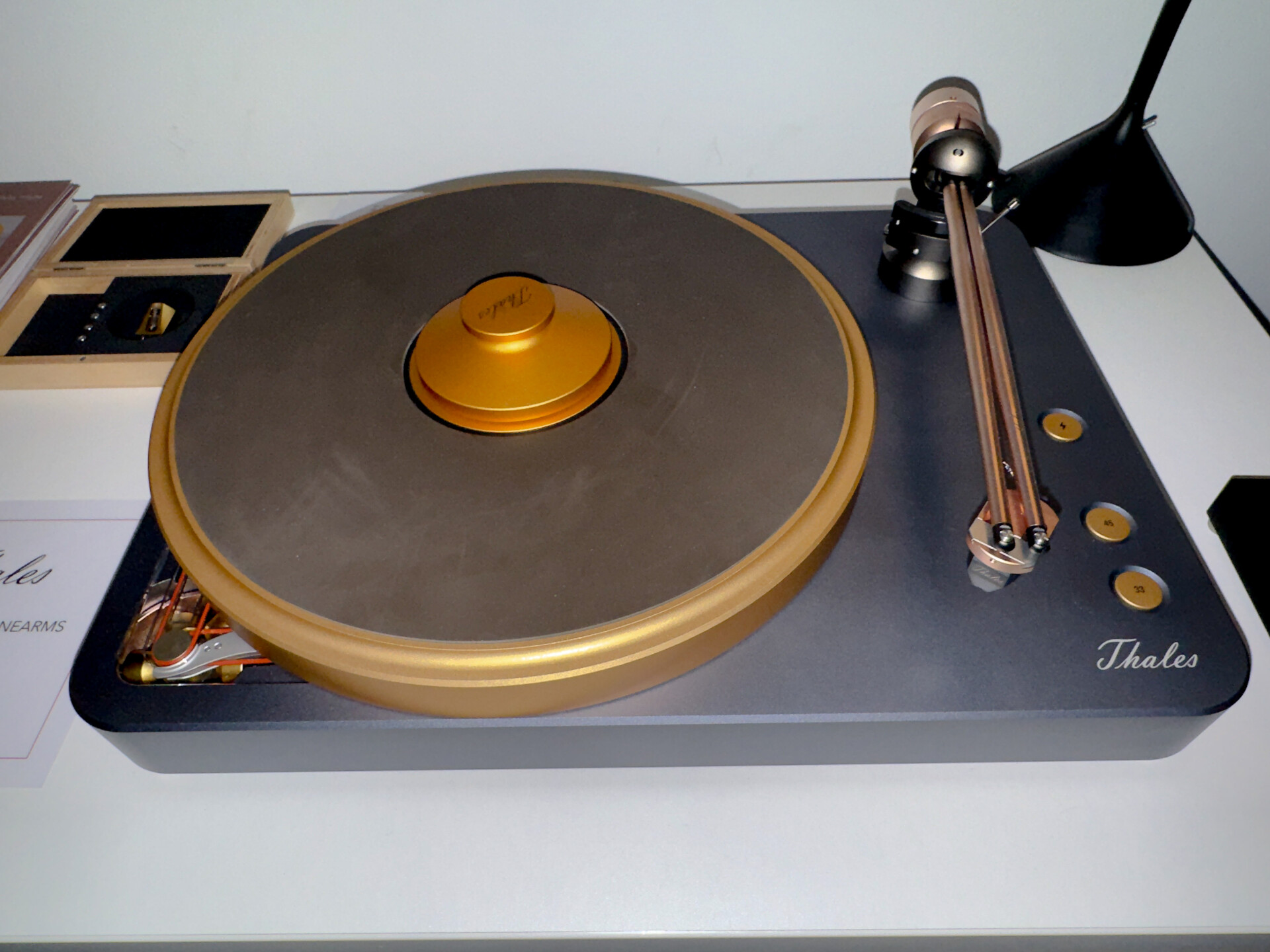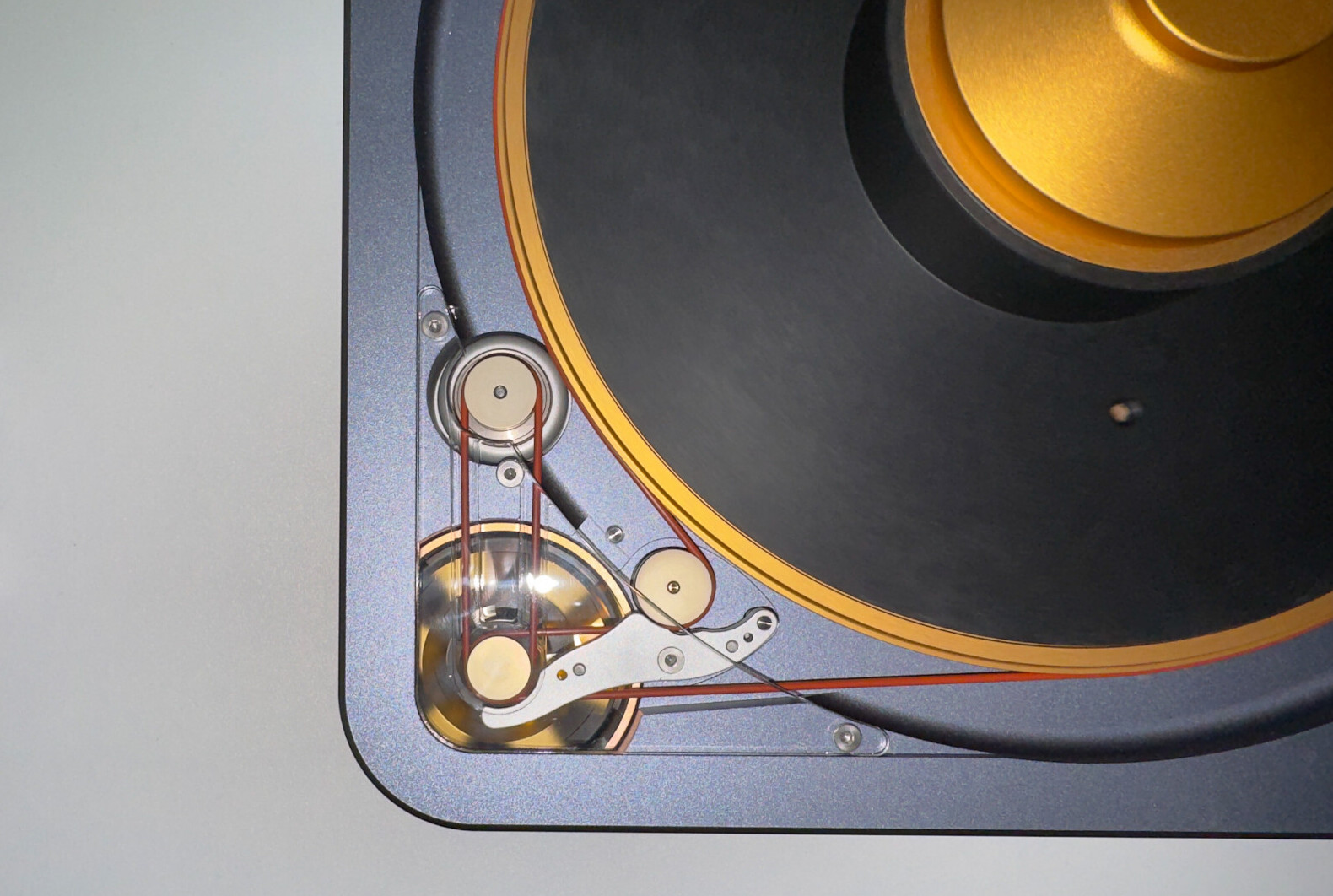Although the original plan in the Clarisys room was to alternate between playing the massive six-panel Atrium and the new, four-panel Aria, public demand, common sense and sheer mass all scuppered that bold intention. But the fact that the aria didn’t get to strut its stuff doesn’t make it any less interesting.

The narrow mid/treble panel/separate bass panel configuration makes for a speaker that, compared to the Auditorium, is far more versatile in terms of set-up and will, as a result, work in far more rooms (sonically as well as visually). Big news is that despite appearances, the narrower panel does contain both mid and treble ribbons, two of each in a coincident, bi-polar configuration. Like the other Clarisys speakers, the baffle structure is now built entirely in aluminium, even down to the heavily slotted rear grille on the bass panel. Aria will cost $140, 000 USD (+tax) delivered anywhere in the world, placing it between the Studio Plus and heavily revised/improved Auditorium models. It can be driven via an entirely passive crossover, or in hybrid active, four-channel configuration, where the bass and mid are active with the treble ribbon rolled in via the passive high-pass filter.
Thales Reference Turntable and Magnifier Phono-Stage

Thales showed two new products in Munich, both exhibiting the brand’s supremely elegant engineering and ability to think outside the box. The Reference Turntable is a clear evolution of the company’s previous models, with the same compact footprint and flawless surface finish and internal battery power supply. Beyond that, the dynamic elements are entirely different. The exquisite, miniature, dual fly-wheel drive of the Compact has been replaced by a centrifugal/mechanical regulator that balances spinning magnetic elements against an outer inductive ring. As the pulley drive spins, the six rod-mounted masses push outwards against the inductive force of the peripheral housing, bringing the rotational moment into perfect balance. Any increase in speed is resisted by the force countering outward movement of the weights, any decrease by the flywheel effect of the mechanism itself. Like all things that are truly elegant it’s also both precise and simple – although changing speeds does involve an extra gear – a switch that’s achieved automatically by a mechanical arm: shades of future past!

Elsewhere, the mass loaded aluminium platter is deeper and heavier than before, sitting on a sub-platter the size of a dinner plate and located by a label-sized central hub. There’s also a fascinating new record weight/clamp. The hollow body contains a mass of tiny, loosely packed bronze balls that, when the clamp is placed on the spindle, rest against a flexible, fabric membrane, sitting on the label and damping the record, creating a ‘suction’ effect that feels almost magnetic when you come to remove it. The Reference turntable costs a comparatively modest €27,000 (€47,000 including the matching Reference tonearm). Compare it to the TechDAS AirForce 4 and it makes the Japanese debutant look both clumsy and expensive.

